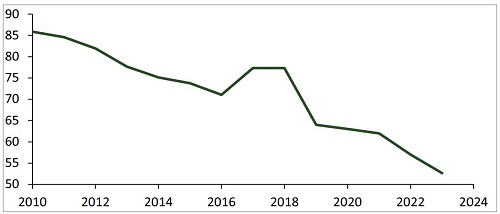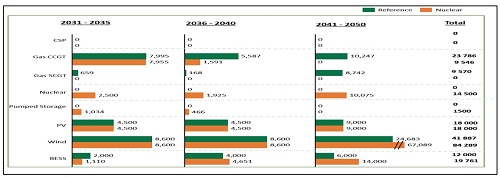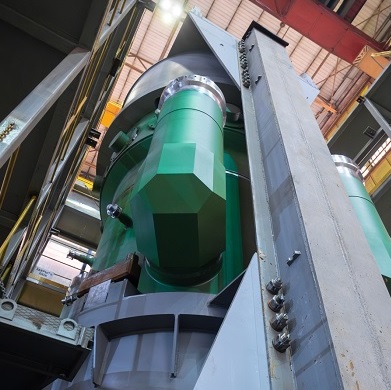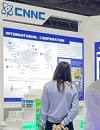 |
||
|
South Africa - a new energy strategy AtomInfo.Ru, PUBLISHED 11.01.2024 Public discussion of the new edition of the Integrated Resource Plan (IRP) has started in South Africa. It will last until February 23, 2024. The previous edition was published in 2019. The new plan considers short-term (until 2030) and long-term (until 2050) prospects. Short-term tasks The plan notes a sharp deterioration in the situation in the South African energy sector compared to the situation at the time of the adoption of the previous version. So, if in 2019 the average energy availability factor (EAF) of power plants of the leading energy company Eskom was about 70%, then in 2023 it decreased to 54.72%. The average EAF of Eskom power plants by year.  The share of nuclear generation in South Africa's energy mix is relatively low (4.9% in 2022 according to PRIS database). At the same time, the plan recognizes the importance of nuclear power plants as an clean and reliable energy source, and the latter consideration takes on special meaning against the background of a general decrease in the EAF. In the short-term tasks for the South African energy sector, it is important to ensure the extension of the life of the Koeberg two-unit NPP (the license of the first unit will come to an end this year). The new plan retains the goal formulated in IRP-2019 - the extension of both units for 20 years. In this regard, it is mentioned that steam generators have been replaced at unit No. 1 and a similar operation is planned for unit No. 2. The commissioning of new nuclear power units is not expected until 2030 (which is natural, since no nuclear construction is currently underway in South Africa). Role of small modular reactors In general theses related to the long-term perspective, the new plan especially highlights small modular reactors (SMR). Their following advantages are indicated:
It is worth noting that the first consideration (about the locations of the SMR) may be very important for the conditions of South Africa. The plan recognizes the existence of significant capacity constraints on power transmission in several regions of the country. Thus, in the period from 2013 to 2022, only about 4,000 km of transmission lines were built, while more than 14,000 km of transmission lines must be built by 2032. Small modular reactors, however, will not be able to cover the needs of South Africa for new capacities if this country decides to finally start nuclear construction. The scenario for the future The new version of the IRP plan proposes five scenarios for the development of South African energy until 2050. New nuclear facilities appear only in one of them, designated as "Pathway Three" (construction with an emphasis on nuclear power plants and renewable energy sources). The introduction of new nuclear capacities in stages looks like this in this scenario:
Thus, in the period from 2031 to 2050, in accordance with this scenario, 14.5 GWe will have to be introduced in the country, and in the last decade the rate of commissioning has reached 1 GWe/y. It is unlikely that these indicators will be achieved at the expense of small reactors. The introduction of new capacities in the "Pathway Three" scenario.  The new plan does not give a definite answer on which scenario South Africa's energy sector will develop. But it is already clear that much will be determined by the availability of affordable finance. The scenario in which there is a place for new nuclear power plants turned out to be the third most expensive. It is cheaper than scenarios focusing only on renewable energy sources and extending the service life of coal plants, but more expensive not only than the basic scenario, but also the scenario in which renewable energy sources and new generation coal plants are being built. The prospects for nuclear energy in South Africa may become clearer after the start of the competitive process for the construction of 2.5 GWe nuclear power units. The relevant ministry promises to start this process in March 2024 and will carefully study what financial conditions suppliers of reactor technologies are ready to offer the country. Other news: HTR-PM starts commercial operation It is an important pathway for optimizing energy structure, ensuring reliable energy supply, and contributing to the dual carbon goal. Lepse Floating Technical Base Dismantlement Project has been successfully implemented To discharge spent nuclear fuel, the Lepse was placed in a specially designed and built onshore sheltering site. This made it possible to prevent any weather effects. IAEA has issued a technical document on global inventories of secondary uranium supplies The document provides a comprehensive assessment of publicly available information on current secondary uranium supplies, including at the regional and national levels. |
Hero of the day 
ROSATOM completed production of RITM-200 for Chukotka icebreaker This is the last reactor that the company is manufacturing under the valid contract for the supply of power units for the new generation nuclear-powered ships. After having been prepared for transportation, the reactor will be delivered to the Baltic Plant. INTERVIEW
CNNC OPINION
WANO |

